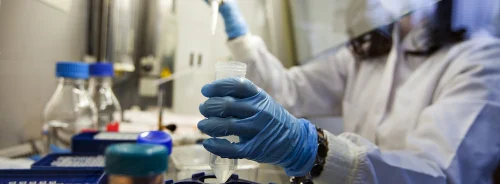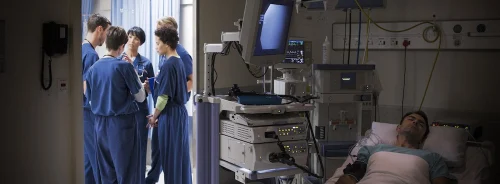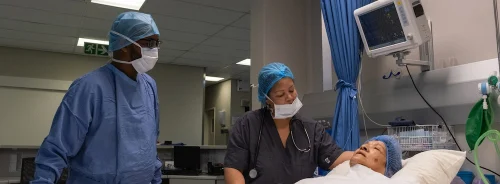ICU Management & Practice, Volume 18 - Issue 1, 2018
Describes an episode of sepsis in a leukaemia patient, whose treatment was early guided by using rapid diagnostics technology to identify the cause of infection.
A 4-year-old patient under treatment for acute lymphoblastic leukaemia, diagnosed 6 months before, was admitted to the emergency room (ER) at midnight (00h33) due to a fever episode of less than one hour of evolution in the context of neutropaenia (absolute neutrophil count 400 cel/µL) and without an increase in acute phase reactants (C-reactive protein [CRP] 0.1 mg/dL and PCT 0.34 ng/dL).
You might also like: Sepsis code implementation at Vall d’Hebron University Hospital: rapid diagnostics key to success
During the child’s stay in the ER, peripheral blood cultures, peripheral quantitative blood cultures and quantitative blood cultures taken through a Port-a-Cath® implantable venous access system (“port”), were obtained at 1h45. At that time, empiric treatment with piperacillin-tazobactam and amikacin was started. The port was manipulated 6 days earlier to administer the chemotherapy treatment. Additionally, a urine and a pharyngo-tonsillar sample were cultured. In the following hours, the general state of the patient worsened. He showed sustained fever, tachycardia, hypotension, signs of peripheral hypoperfusion, presence of lactic acid levels of 3.3 mm/L in the gasometry and an increase of the acute phase reactants (CRP 15 mg/dL and PCT 46 ng / dL). Consequently, the sepsis code was activated (10h47), piperacillin-tazobactam was replaced by meropenem and vancomycin, and the patient was transferred to the intensive care unit.
The peripheral blood culture was positive at 13h14 (day 1), and at the Gram stain, Gram-negative bacillus was observed. Blood cultures were processed according to the standard routine workflow of the laboratory (fast subculture, MALDI-TOF identification and antibiogram by VITEK®2 system), and also with the Accelerate Pheno™ system using the Accelerate PhenoTest™ BC kit. The Accelerate Pheno™ system returned an identification of Escherichia coli after 1.21 hrs (15h50 on day 1) and an antibiogram 5.17 hours after identification (21h07 on day 1). The E. coli isolate was susceptible to all antibiotics evaluated. Consequently, the doctor on call de-escalated the treatment of the patient to piperacillin-tazobactam. The antibiogram performed by the standard technique was obtained at dawn, being informed early in the morning of the following day (day 2). The results of this antibiogram were consistent with those previously obtained by the Accelerate Pheno™ system on day 1. The peripheral quantitative blood culture was positive on day 2, yielding > 500,000 cfu of E. coli, and the peripheral quantitative blood taken through the port yielded 40 cfu (ratio of ≥4:1), confirming that sepsis arose from the infected port. Urine and pharyngo-tonsillar cultures were negative. On day 2, given the good clinical evolution, the child was transferred back to the onco-haematology ward, following removal of the port.
Conclusions
The time to obtain laboratory results needed to diagnose certain pathologies has been reduced by the application of technological innovations. This is essential in clinical situations in which fast and accurate results can translate into significant benefit for patients, increasing survival rates and improving health outcomes. Currently, rapid microbiologic diagnosis of bacteraemia and consequently of sepsis is limited by the difficulty of making a rapid and direct diagnosis from the patient's blood. The blood cultures are still necessary, and in most cases, clinicians must wait 24h-36h to have the final identification and antimicrobial susceptibility of the causative agent.
Several studies have shown that 30% to 50% of antimicrobial treatments are inappropriate or unnecessary in terms of treatment indication, choice of antimicrobial agent and incorrect duration of antibiotic therapy. In this sense, the diagnostic stewardship professes to guide the therapeutic decision by microbiological results. To do this, it is necessary that the laboratory communicates an accurate and a timely pathogen identification and antimicrobial susceptibility testing. In the case described herein, the Accelerate Pheno™ system allowed us to obtain information about the infecting pathogen and its antimicrobial susceptibility in less than 24h from the patient’s admission to the hospital—sooner than when a conventional approach was used. This permitted the clinician to select the most appropriate antibiotic sooner than would be possible when following our standard laboratory workflow. Likewise, the reduction in the time to antibiotic de-escalation, from empiric treatment with meropenem and vancomycin to piperacillin-tazobactam, reduced the potential for selection of multi-drug resistant bacteria during treatment.
This article was prepared in partnership with Accelerate Diagnostics, Inc. To find out more about fast MIC diagnosis, visit http://acceleratediagnostics.com.








